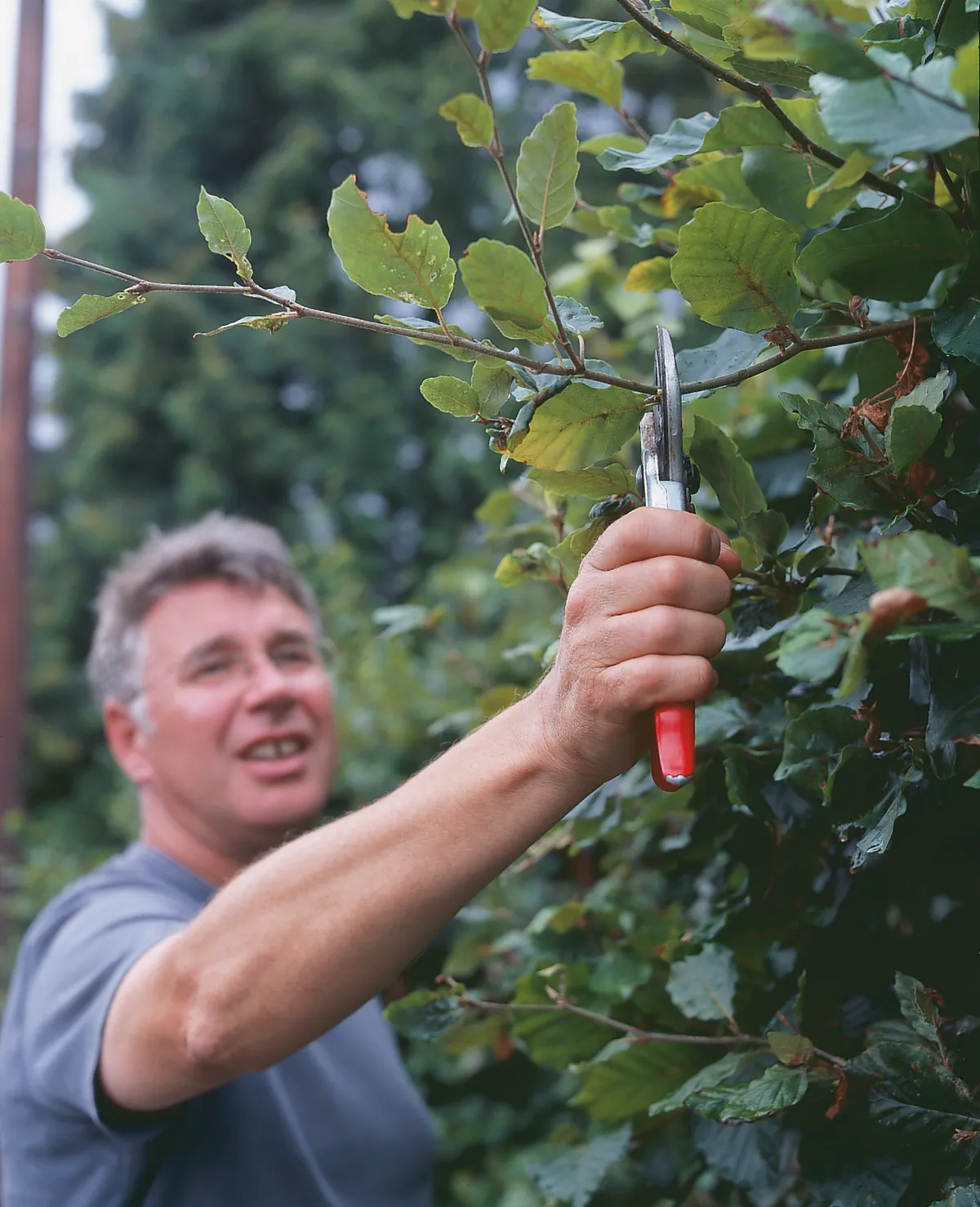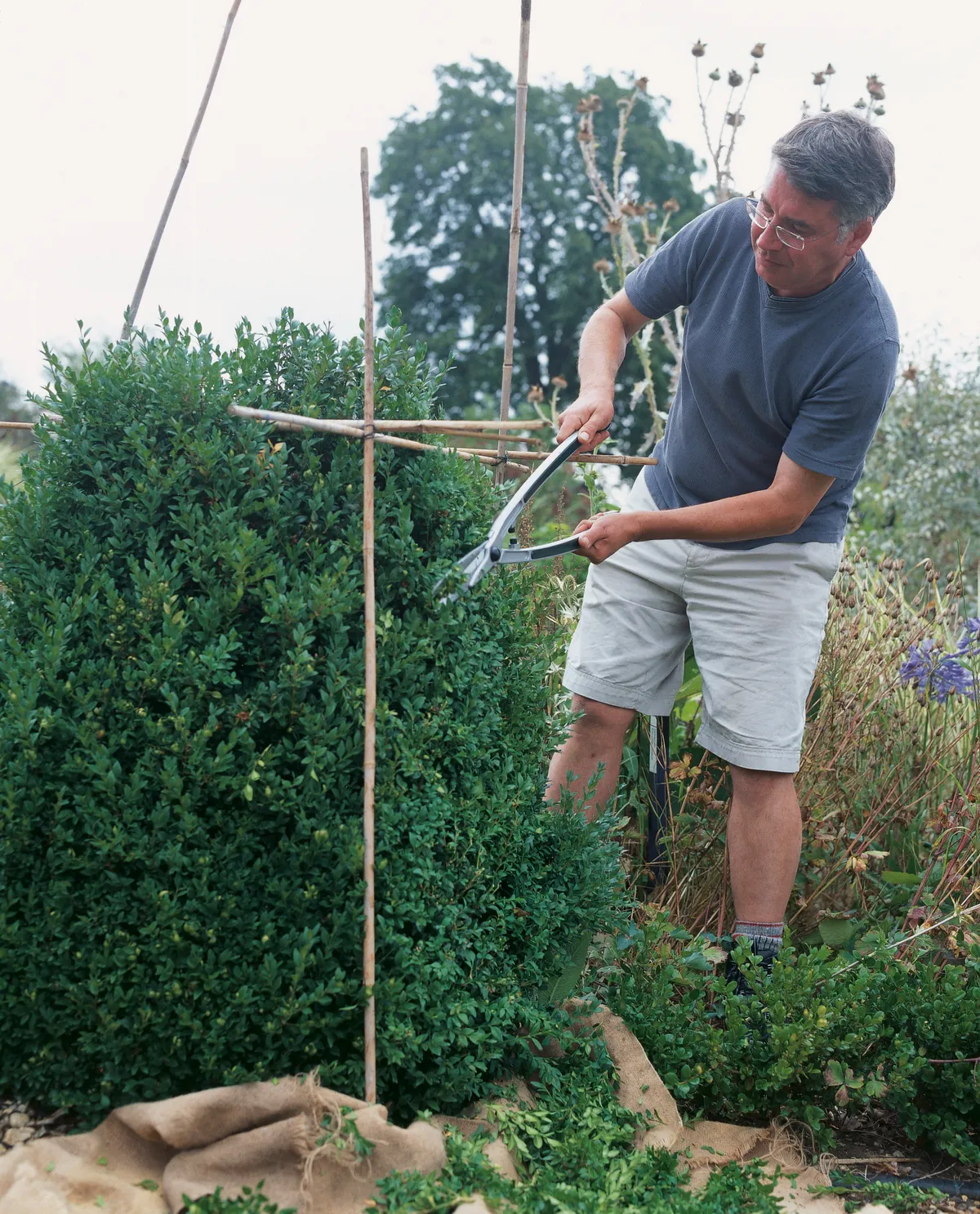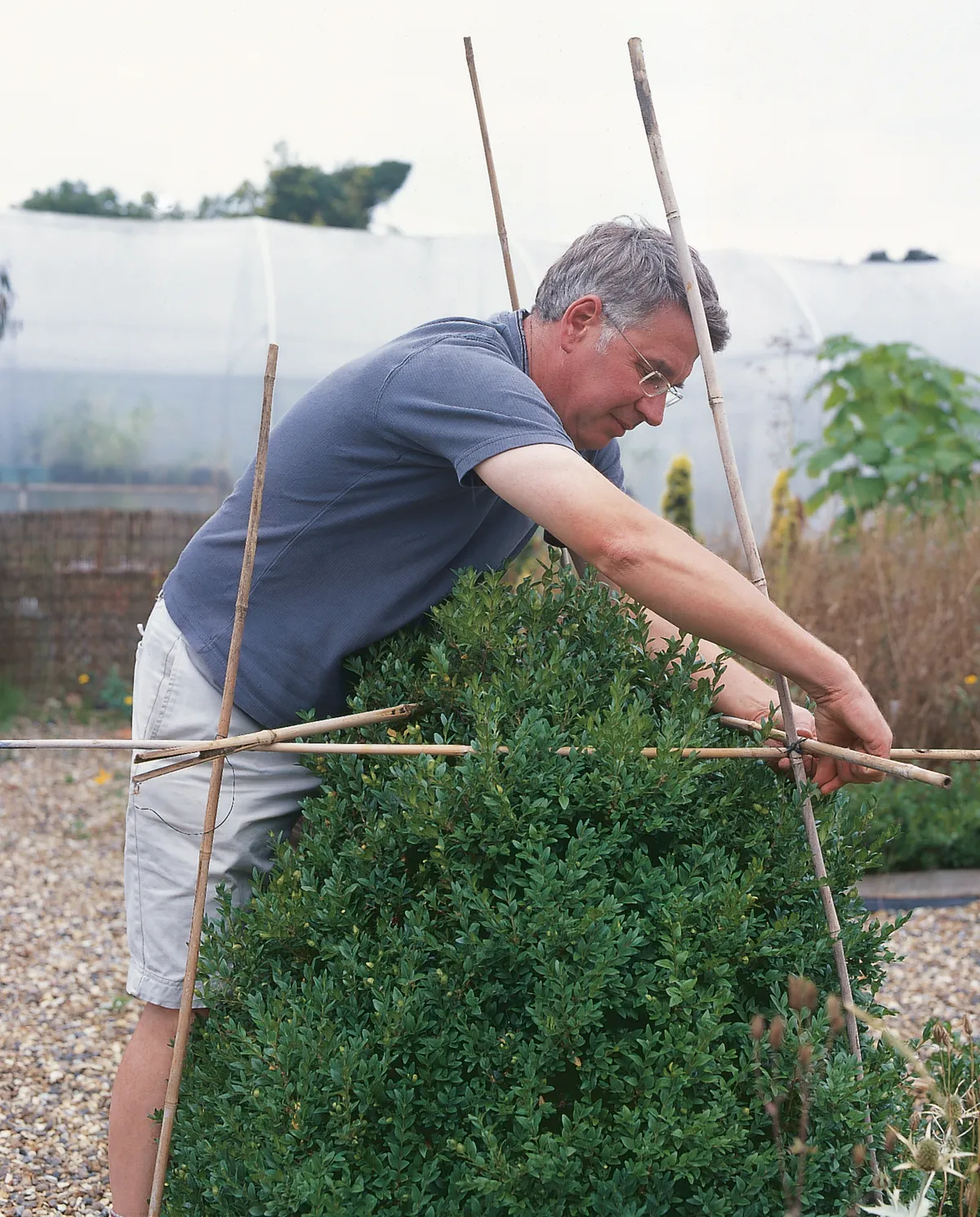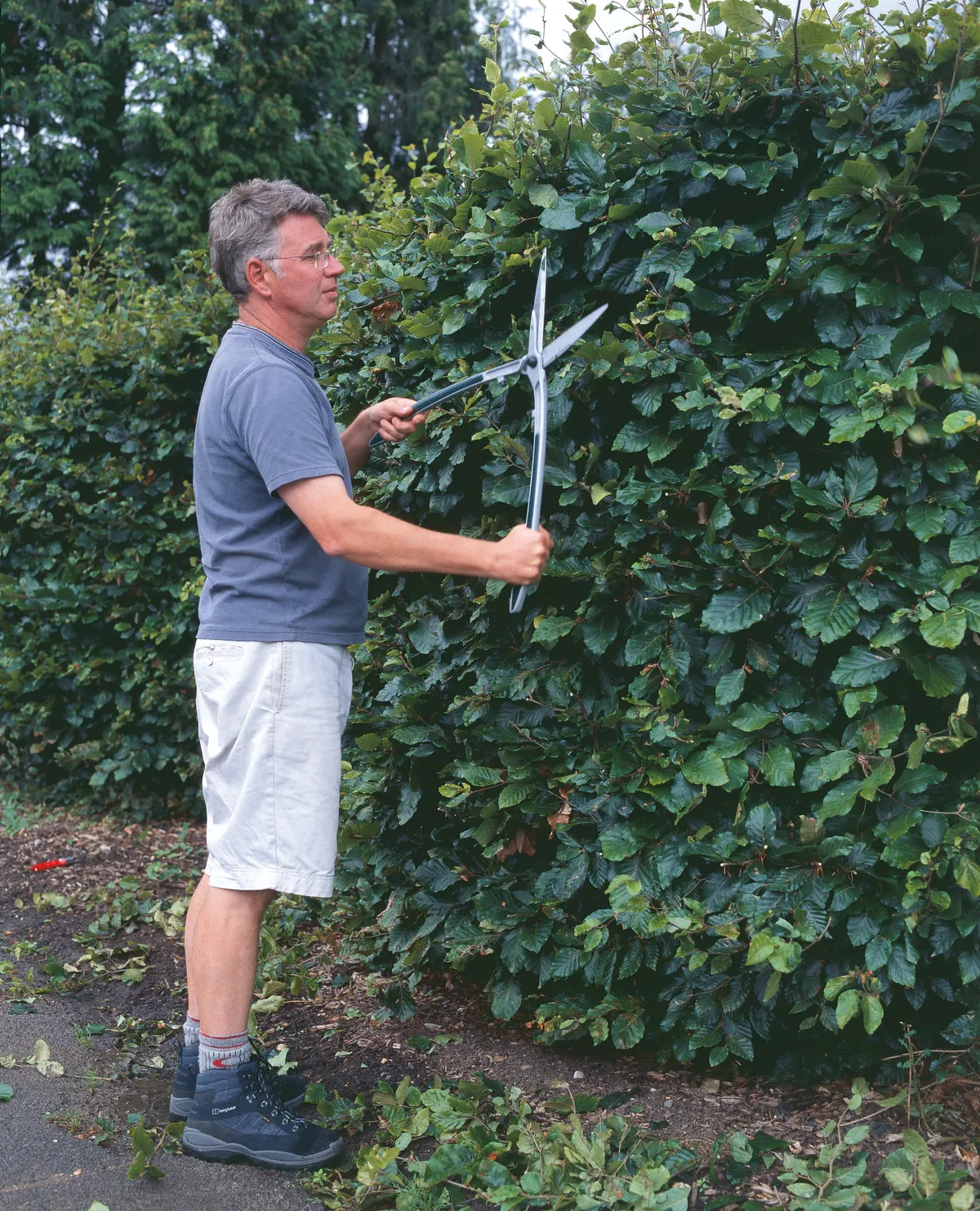When we were children, clipping and pruning hedges was a good way to earn money, but I wince at the thought of the damage we did, hacking away with blunt shears that were far too heavy for us. Unfortunately, hedge cutting and trimming is not considered a great craft of gardening, but hedges are often the most important structure in a garden and proper hedge cutting can add greatly to a garden’s beauty.
Don't miss our piece on alternatives to box and the best hedging plants.
Here's how to trim a hedge
How to trim a hedge
Cutting hedges
- The type of hedging plants, and the style of your garden, will dictate how and when to cut it. Informal, flowering hedges, such as Escallonia and Viburnum tinus, are the easiest to look after, but have an untidy profile.
- Leggy growth should be cut back after the plant has flowered to maintain the shape of the hedge, but remove shoots with secateurs and not shears as this avoids the problem of clipped leaves rotting.
- Formal hedges need to be closely trimmed to keep a crisp outline.
- Low-growing box hedges can be cut with vertical sides, but hedges over 30cm tall should be tapered slightly towards the top to allow light to reach the bottom of the hedge and prevent the base developing bare patches.

Dos and don'ts of hedge cutting
DO Keep your shears sharp and clean.
DON'T Clip evergreen hedges when they are dry, so during the summer water the hedge the evening before a trim.
DON'T Be tempted to cut straight lines ‘by eye’; some kind of hedge clipping guide is needed. A piece of string stretched between two poles is the easiest way to create a straight and level line to cut against. Crenulated, pitched, domed and other complex hedge shapes may require a wooden template to ensure a uniform shape along the hedge.
DO Watch out for nesting birds. If you are hedge clipping early in the year, check that there are no birds nesting in your hedge. If there are, and your hedge trimming might disturb them, wait until the chicks have fledged before starting work. This is actually the law. Under the Wildlife and Countryside Act 1981 it is illegal to damage a bird’s nest while it is in use, or even being built.

Hedge cutting: when to cut your hedge
- May – Viburnum tinus
- May-September, every few weeks – privet (Ligustrum), hedging honeysuckle (Lonicera nitida)
- June and again in August – hawthorn (Crataegus)
- July or August – box (Buxus). It is important that box does not dry out when it is clipped. On very hot days clip in the cool of the evening
- July, August or the beginning of September – hornbeam (Carpinus betulus)
- August – holly (Ilex)
- August or September – Elaeagnus, yew (Taxus baccata)
- September or October – beech (Fagus sylvatica)
Cutting hedge shapes
Before trimming a hedge to a complex profile, remember that complicated hedge forms require more maintenance. Inspired by Christopher Wren’s undulating crinkle-crankle wall at the garden at Wroxall, Warwickshire, I decided to create a serpentine shape from a beech hedge. The initial hedge shaping was done with the aid of rope laid on the ground. To keep the clean line of the hedge it needs to be clipped three times a year, rather than the once-a-year trim that most beech hedges need.

Tall hedges are difficult to maintain, particularly at the top. Clipping with the top of the hedge at waist height is the least exhausting position to work in. Scaffold towers can be used to get you into the correct position, but you need space to manoeuvre them. It may be more convenient to use a mechanical trimmer with a cutting blade that you can adjust to the desired angle. Clipping small-leaved evergreens such as box or yew into topiary shapes is not tricky and is fun to try.
Try a metal frame to cut your hedge
Metal frames in the form of anything from sheep to Mickey Mouse can be bought and used as guides for hedge cutting. Once the plant has grown through the frame, clip close to the metal. After a few years the frame will disappear inside the shape. Ivy cut close to wire frames will give a more instant topiary look. For cubes, cones and other geometric shapes, tie bamboo poles around the plant as a guide. If you have several pieces to clip to the same shape, move the frame from shrub to shrub.
Topiary ‘lollipops’ are an easy way to bring a sense of formality into small gardens. Hollies and Elaeagnus are the most robust plants for this. Clipped standard bay is susceptible to damage by frost, particularly in Scotland and the North of England, and quickly look burnt and ugly. The ideal time to cut both holly and Elaeagnus hedges is August, but by the winter, when the sharpness of the balls is most important, they have started to make new, straggly growth. Trim off new growth at the end of autumn but do not cut closely as frost can cause damage. In spring, use secateurs to cut the balls into a tight shape, cutting through stems, not leaves. If your topiary is high up, you may need someone on the ground to guide you. As with all hedge and topiary clipping, be prudent. It’s better to make a second cut rather than wait for an over-enthusiastically clipped hedge to grow back. Read our guide on topiary here.
Cutting hedges for the first time
With flowering shrubs and vigorous non-flowering ones (hawthorn and privet) hedge pruning should begin as soon as the hedge has been planted. Reduce the height of the plants by about one third. This may seem drastic for new plants, but if you don’t your hedge will always be thin and weedy at the base. The following autumn clip new growth back by half and start cutting hedge side shoots to the width you want the hedge to be. Evergreens and slow-growing deciduous plants (beech and hornbeam) should not be cut back after planting. Trim side shoots by a third but leave leading shoots to grow. The hedge will look thin, but hold your nerve. Clip when the plants reach a few inches above the height you want the hedge to be. This will stimulate lots of side shoots and the hedge will quickly fill out.

Renovating old hedges
Old hedges, particularly privet ones, can begin to look bare in patches and will need rejuvenating. Neglected hedges may need to be cut down to a manageable height and width. Privet is semi-evergreen, so some loss of leaves during cold weather is natural, but if you have lots of patches with twiggy shoots and few leaves it may be best to cut the hedge hard back, right into the old branches. Privet responds well to this and will soon send up new shoots that can be cut every few months to encourage them to bush out rather than grow straight up. Yew can also be cut back to bare branches, but it is best to do one side of the hedge, allow it to grow back, and then to do the opposite side. New growth will appear on the old bare branches within a few weeks. Feed the hedge with a mulch of manure or compost and these new shoots will put on about 20cm of growth in the first year.
